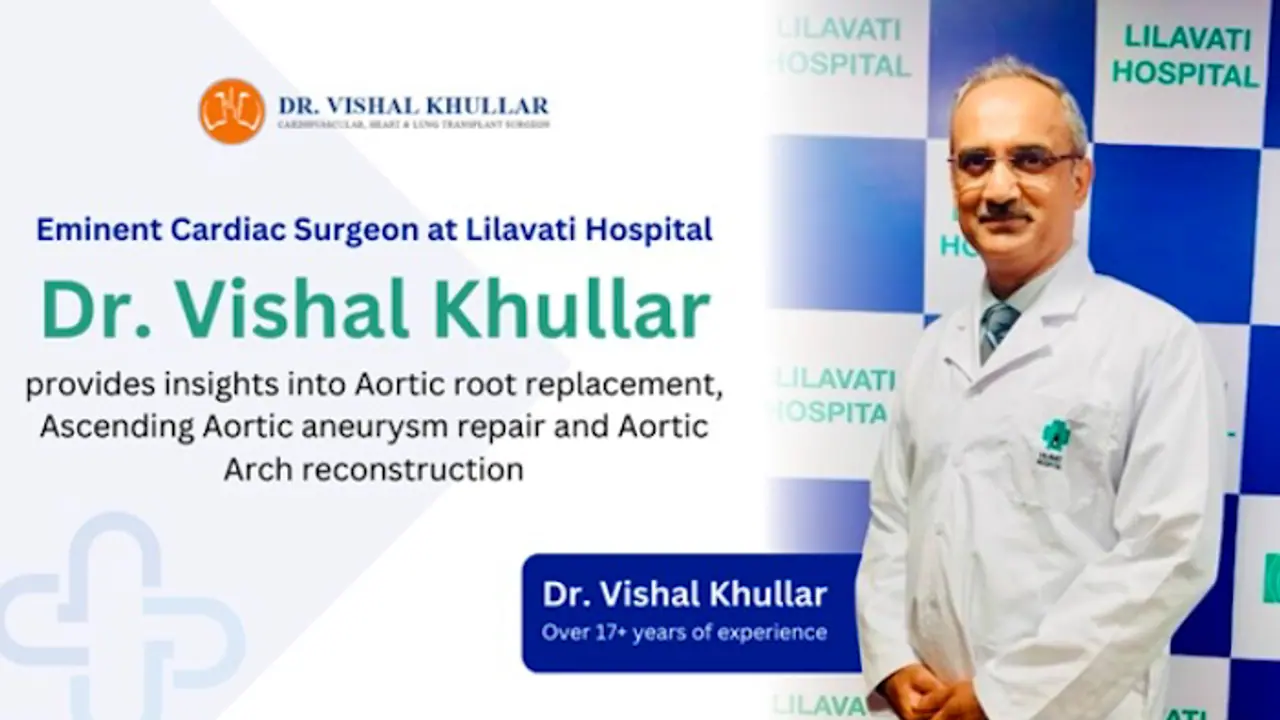Dr. Vishal Khullar shares his insights on the Aortic Aneurysm Repair with Aortic Arch Reconstruction approach to treat patients with bicuspid aortic valve (BAV), a congenital heart condition.
These patients are at a higher risk of developing cardiac complications, especially aortic aneurysms, aortic valve stenosis and aortic valve degeneration. The degeneration of the aorta is faster and can occur when patients reach their 40s and 50s.
The aorta is the largest blood vessel that rises from the heart in a body, while the ascending aorta refers to its first segment inside the chest. The heart pumps oxygen-enriched blood to every organ of the body through the aorta. Complications such as aortic aneurysms and dissection of the aorta can happen in case of patients with bicuspid valves.
A normal aortic valve has three leaflets, but a patient with a bicuspid aortic valve (BAV) has two leaflets. The bicuspid aortic valve is associated with aortopathy and hence, they are more likely to develop an ascending aortic aneurysm, which impacts their living and overall health.
Dr. Khullar is one of the leading cardiac surgeons in India. During his thirty years of medical practice, he has successfully performed aortic arch replacements, aortic root replacement surgeries, heart surgeries, redosternotomies, and other challenging cardiac surgeries.
Ms Vishaka Goyal, co-founder of ClinicSpots, a doctor discovery and healthcare platform, states, ‘I am proud to be associated with Dr Vishal Khullar, one of the most talented and leading cardiac surgeons in India. We appreciate his decision to practice in India despite his flourishing medical stint in the USA.’
Dr Vishal explains this condition by stating, ‘Aortic aneurysm refers to an outward bulge or ballooning of the aorta, the main artery of the human body. It requires suitable treatment as the aneurysm can rupture, leading to internal haemorrhage, which is a life-threatening condition.’
Such patients complain of chest pain, breathlessness, or an accelerated heartbeat. Heart specialists and surgeons recommend aortic aneurysm repair with aortic arch reconstruction, if and when the ascending aorta enlarges to a particular size.
Two surgical procedures to repair aortic aneurysms are open aortic aneurysm repair and endovascular aortic aneurysm repair (EVAR). To perform the Open Aortic Aneurysm Repair, the cardiac surgeon makes an incision in the chest to access the aorta. The surgeon removes the damaged section of the aorta to replace it with a synthetic graft.
On the other hand, an Endovascular Aortic Aneurysm Repair (EVAR) is a minimally invasive procedure wherein the stent is inserted via catheter through a small incision in the groin. The stent graft inserted in the aorta strengthens the weak walls of the aorta.
The aortic arch reconstruction is a complex procedure recommended for patients who have been diagnosed with an aortic arch aneurysm. Dr. Vishal Khullar explains the benefits of the aortic arch reconstruction procedure, ‘Beginning with reducing the risk of an aortic aneurysm rupture and preventing fatalities, it also improves the lives of the patients and increases their longevity’.
He adds that to prevent cardiac complications, the patient must avail of early diagnosis and treatment. Being aware and prepared for complications while opting to resolve them through surgery is the most recommended treatment option for patients with bicuspid valve complications.
Contact Us
Lilavati Hospital & Research Centre
A-791, Bandra Reclamation, Bandra (W), Mumbai - 400050. India.
Phone: +91-9987077880
Email: appointments@drvishalkhullar.com
About Dr. Vishal Khullar
Considered amongst the most highly acclaimed Heart surgeon in Mumbai, with a flourishing international stint at the Cleveland Clinic Foundation, Cleveland, Ohio, and as a Senior Associate Consultant at Mayo Clinic, Dr Vishal Khullar is available for consultancy in India. He has successfully performed challenging cardiac surgeries and trained upcoming cardiac surgeons. His training and experience at these top-notch centres for cardiac treatment speak volumes of his expertise and insight in performing them.
Some of the surgeries include Aortic Valve Replacement, Mitral Valve Repair or Replacement, Tricuspid Valve Repair or Replacement, Total Arterial Revascularization (Bypass Surgery), Repair, Heart Transplant and Left Ventricular Assist Device (LVAD) Implantation.
